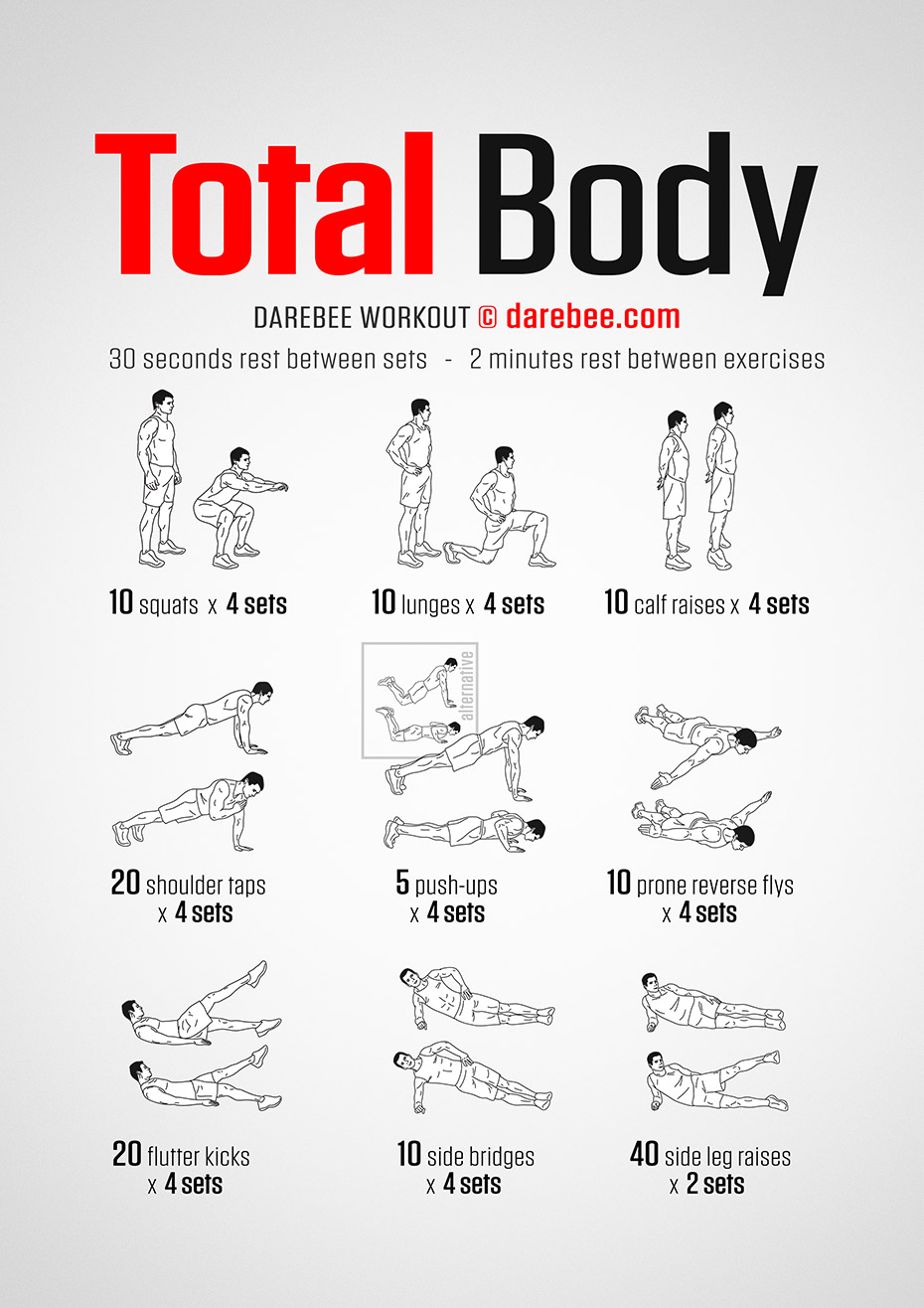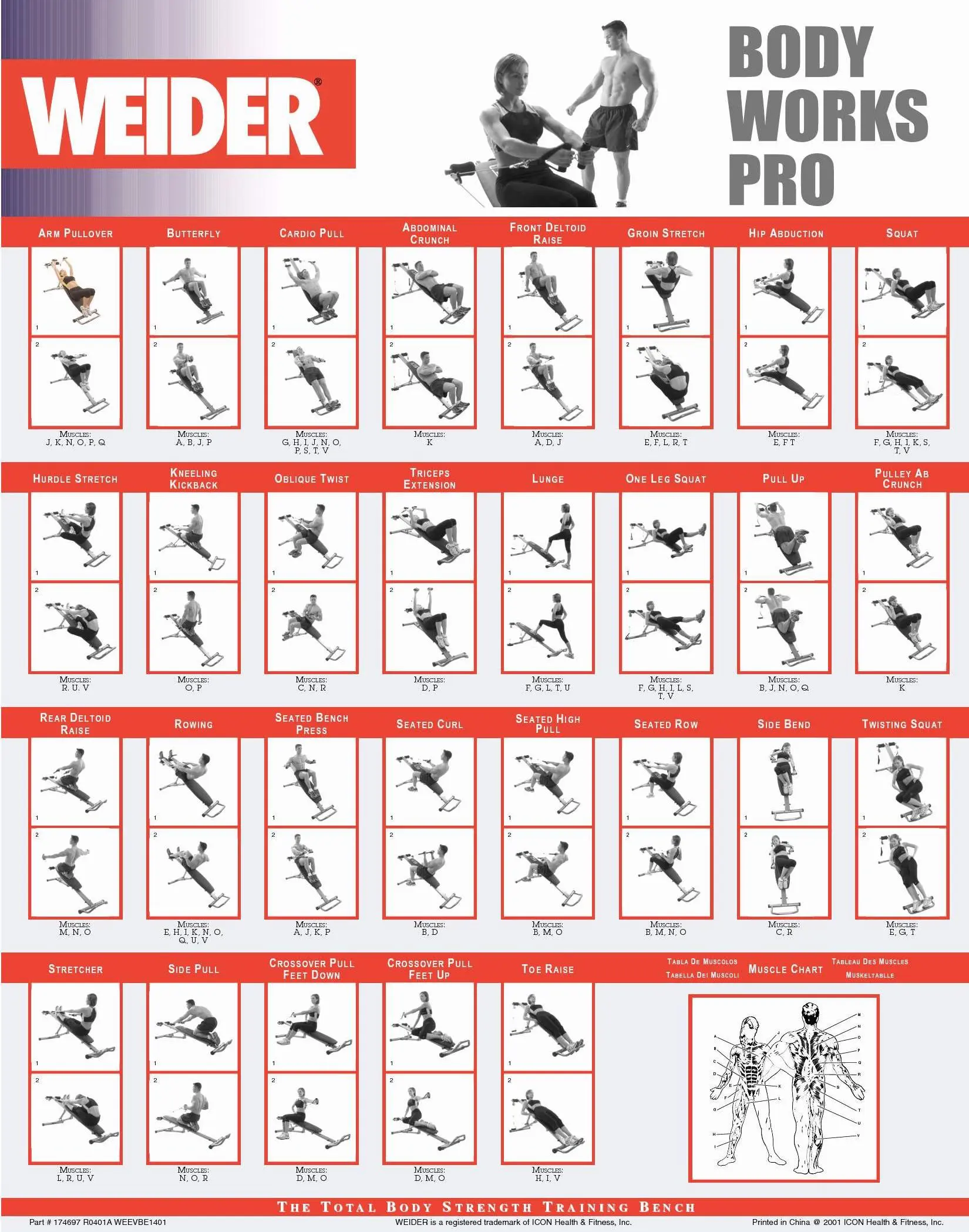“The Ultimate Guide to Workouts for a Healthy Body: Find Your Fit and Thrive
Related Articles The Ultimate Guide to Workouts for a Healthy Body: Find Your Fit and Thrive
- AI in Sleep Devices: The Key to Unlocking Better Sleep Health
- AI-Powered Portable Healthcare: Advancing Healthcare Accessibility
- Advanced AI in Orthopedic Devices: Unlocking Mobility Innovations
- Revolutionizing Health Monitoring: AI-Powered Real-Time Vital Sign Tracking Devices
- The Future of Skin Cancer Detection: AI-Empowered Devices
Introduction
With great enthusiasm, we delve into The Ultimate Guide to Workouts for a Healthy Body: Find Your Fit and Thrive, a subject that holds significance in today’s world. Whether you are new to this topic or looking to deepen your understanding, this article aims to offer valuable insights and spark curiosity.
Table of Content
About Video The Ultimate Guide to Workouts for a Healthy Body: Find Your Fit and Thrive
The Ultimate Guide to Workouts for a Healthy Body: Find Your Fit and Thrive

In a world obsessed with quick fixes and fleeting trends, the pursuit of genuine health often gets lost in the noise. But the truth is, building a healthy body isn’t about restrictive diets or punishing workouts. It’s about finding sustainable, enjoyable activities that nourish your body, mind, and spirit.
This comprehensive guide will walk you through the best workouts for a healthy body, covering everything from the fundamental principles of exercise to specific routines and tips for staying motivated. Whether you’re a seasoned athlete or a complete beginner, you’ll find valuable insights to help you create a personalized fitness plan that works for you.
Why Exercise Matters: The Foundation of a Healthy Body
Before diving into specific workouts, it’s crucial to understand why exercise is so vital for overall health. The benefits extend far beyond just physical appearance.
- Cardiovascular Health: Exercise strengthens your heart, improves circulation, and reduces the risk of heart disease, stroke, and high blood pressure.
- Weight Management: Exercise helps you burn calories, build muscle, and maintain a healthy weight.
- Mental Well-being: Exercise releases endorphins, which have mood-boosting effects. It can also reduce stress, anxiety, and depression.
- Bone Density: Weight-bearing exercises help increase bone density, reducing the risk of osteoporosis.
- Muscle Strength and Endurance: Exercise builds muscle strength and endurance, making everyday tasks easier and reducing the risk of injuries.
- Improved Sleep: Regular exercise can improve sleep quality and duration.
- Reduced Risk of Chronic Diseases: Exercise can help prevent or manage chronic diseases such as type 2 diabetes, certain types of cancer, and arthritis.

The Key Components of a Well-Rounded Workout Routine
A healthy body requires a balanced approach to exercise. Here are the key components to include in your workout routine:

Cardiovascular Exercise (Cardio):
- What it is: Activities that elevate your heart rate and improve your cardiovascular fitness.
- Benefits: Improves heart health, burns calories, increases endurance.
- Examples: Running, swimming, cycling, brisk walking, dancing, HIIT (High-Intensity Interval Training).
- Recommendations: Aim for at least 150 minutes of moderate-intensity or 75 minutes of vigorous-intensity cardio per week, or a combination of both.

Strength Training:
- What it is: Exercises that use resistance to build muscle strength and endurance.
- Benefits: Increases muscle mass, strengthens bones, improves metabolism, enhances posture.
- Examples: Lifting weights, using resistance bands, bodyweight exercises (push-ups, squats, lunges).
- Recommendations: Aim for at least two strength training sessions per week, working all major muscle groups (legs, back, chest, shoulders, arms, core).
Flexibility and Mobility:
- What it is: Exercises that improve your range of motion and flexibility.
- Benefits: Reduces risk of injury, improves posture, enhances athletic performance, relieves muscle tension.
- Examples: Stretching, yoga, Pilates, foam rolling.
- Recommendations: Incorporate flexibility and mobility exercises into your routine several times a week, or even daily.
Balance Training:
- What it is: Exercises that challenge your balance and stability.
- Benefits: Improves coordination, reduces risk of falls, enhances athletic performance.
- Examples: Standing on one leg, yoga poses, tai chi, using a balance board.
- Recommendations: Include balance training exercises in your routine a few times a week, especially as you age.
The Best Workouts for a Healthy Body: A Detailed Look
Now, let’s explore some of the most effective and enjoyable workouts for building a healthy body:
Running:
- Why it’s great: Running is a fantastic cardiovascular workout that can be done anywhere. It’s also a great way to clear your mind and enjoy the outdoors.
- How to do it: Start with a walk-run program if you’re new to running. Gradually increase your running intervals and distance over time.
- Tips: Invest in good running shoes, warm up before each run, and cool down afterwards.
Swimming:
- Why it’s great: Swimming is a low-impact workout that’s gentle on your joints. It’s also a great way to improve your cardiovascular fitness and build muscle strength.
- How to do it: Start with basic strokes like freestyle and backstroke. Gradually increase your distance and intensity.
- Tips: Find a pool that’s convenient for you, and consider taking swimming lessons to improve your technique.
Cycling:
- Why it’s great: Cycling is a great way to get your heart rate up and explore your surroundings. It’s also a low-impact workout that’s easy on your joints.
- How to do it: Start with short rides on flat surfaces. Gradually increase your distance and intensity.
- Tips: Invest in a good bike and helmet, and learn basic bike maintenance.
Strength Training with Weights:
- Why it’s great: Strength training with weights is a highly effective way to build muscle mass, strengthen bones, and improve your metabolism.
- How to do it: Start with light weights and focus on proper form. Gradually increase the weight as you get stronger.
- Tips: Work with a trainer to learn proper form and technique.
Bodyweight Exercises:
- Why it’s great: Bodyweight exercises are a convenient and effective way to build strength and endurance without any equipment.
- How to do it: Start with basic exercises like push-ups, squats, lunges, and planks. Gradually increase the difficulty by adding variations or increasing the number of repetitions.
- Tips: Focus on proper form and technique.
Yoga:
- Why it’s great: Yoga is a great way to improve your flexibility, balance, and strength. It’s also a great way to reduce stress and improve your mental well-being.
- How to do it: Start with beginner-level classes and gradually progress to more advanced classes.
- Tips: Find a qualified instructor who can guide you through the poses.
Pilates:
- Why it’s great: Pilates is a great way to strengthen your core, improve your posture, and increase your flexibility.
- How to do it: Start with beginner-level classes and gradually progress to more advanced classes.
- Tips: Find a qualified instructor who can guide you through the exercises.
High-Intensity Interval Training (HIIT):
- Why it’s great: HIIT is a time-efficient workout that involves short bursts of intense exercise followed by brief recovery periods. It’s a great way to burn calories, improve your cardiovascular fitness, and build muscle endurance.
- How to do it: Choose an exercise like running, cycling, or jumping jacks. Perform the exercise at a high intensity for a short period (e.g., 30 seconds), followed by a brief recovery period (e.g., 30 seconds). Repeat this cycle for a set number of rounds.
- Tips: Start with shorter intervals and gradually increase the duration and intensity as you get fitter.
Creating Your Personalized Workout Plan
The best workout plan is one that you enjoy and can stick to. Here are some tips for creating a personalized workout plan:
- Set Realistic Goals: Start with small, achievable goals and gradually increase the challenge as you get fitter.
- Find Activities You Enjoy: Choose activities that you find fun and engaging. This will make it more likely that you’ll stick to your workout plan.
- Mix it Up: Vary your workouts to prevent boredom and challenge your body in different ways.
- Listen to Your Body: Pay attention to your body’s signals and rest when you need to.
- Make it a Habit: Schedule your workouts into your calendar and treat them like important appointments.
- Find a Workout Buddy: Working out with a friend can help you stay motivated and accountable.
- Track Your Progress: Keep track of your workouts and progress. This will help you stay motivated and see how far you’ve come.
- Be Patient: It takes time to see results. Don’t get discouraged if you don’t see changes overnight.
Staying Motivated: Tips for Long-Term Success
Motivation can be a challenge, but here are some tips for staying on track:
- Celebrate Your Successes: Acknowledge and celebrate your achievements, no matter how small.
- Reward Yourself: Treat yourself to something you enjoy after reaching a milestone.
- Focus on the Benefits: Remind yourself of the many benefits of exercise, such as improved energy levels, better sleep, and reduced stress.
- Don’t Be Afraid to Adjust: If your workout plan isn’t working, don’t be afraid to adjust it.
- Seek Professional Help: If you’re struggling to stay motivated, consider working with a personal trainer or health coach.
The Bottom Line: Embrace the Journey
Building a healthy body is a journey, not a destination. It’s about making sustainable lifestyle changes that you can maintain for the long term. By incorporating the workouts and tips outlined in this guide, you can create a personalized fitness plan that works for you and helps you thrive. Remember to be patient, listen to your body, and enjoy the process. Your health is worth the investment!

